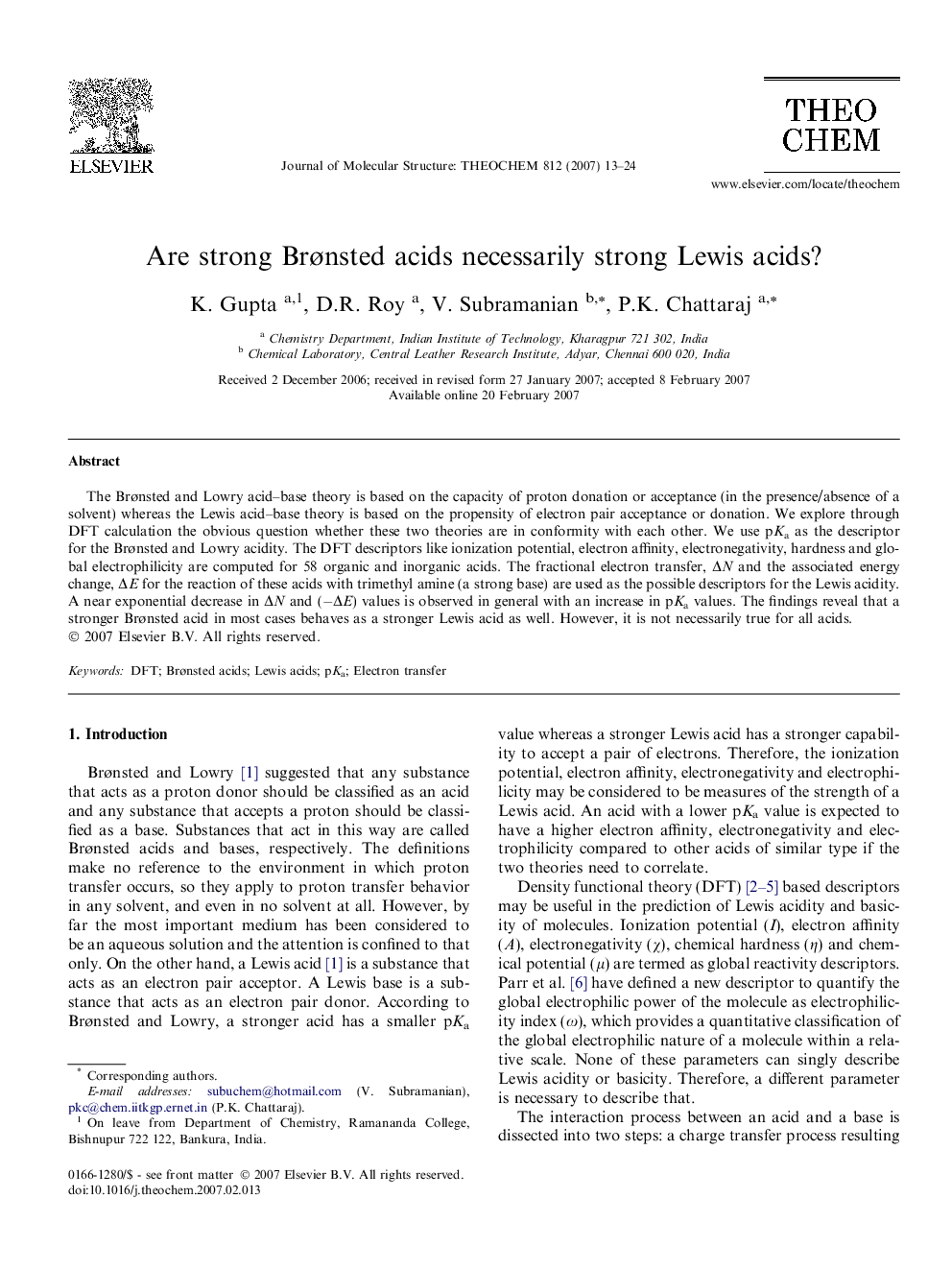| Article ID | Journal | Published Year | Pages | File Type |
|---|---|---|---|---|
| 5418010 | Journal of Molecular Structure: THEOCHEM | 2007 | 12 Pages |
Abstract
The Brønsted and Lowry acid-base theory is based on the capacity of proton donation or acceptance (in the presence/absence of a solvent) whereas the Lewis acid-base theory is based on the propensity of electron pair acceptance or donation. We explore through DFT calculation the obvious question whether these two theories are in conformity with each other. We use pKa as the descriptor for the Brønsted and Lowry acidity. The DFT descriptors like ionization potential, electron affinity, electronegativity, hardness and global electrophilicity are computed for 58 organic and inorganic acids. The fractional electron transfer, ÎN and the associated energy change, ÎE for the reaction of these acids with trimethyl amine (a strong base) are used as the possible descriptors for the Lewis acidity. A near exponential decrease in ÎN and (âÎE) values is observed in general with an increase in pKa values. The findings reveal that a stronger Brønsted acid in most cases behaves as a stronger Lewis acid as well. However, it is not necessarily true for all acids.
Related Topics
Physical Sciences and Engineering
Chemistry
Physical and Theoretical Chemistry
Authors
K. Gupta, D.R. Roy, V. Subramanian, P.K. Chattaraj,
